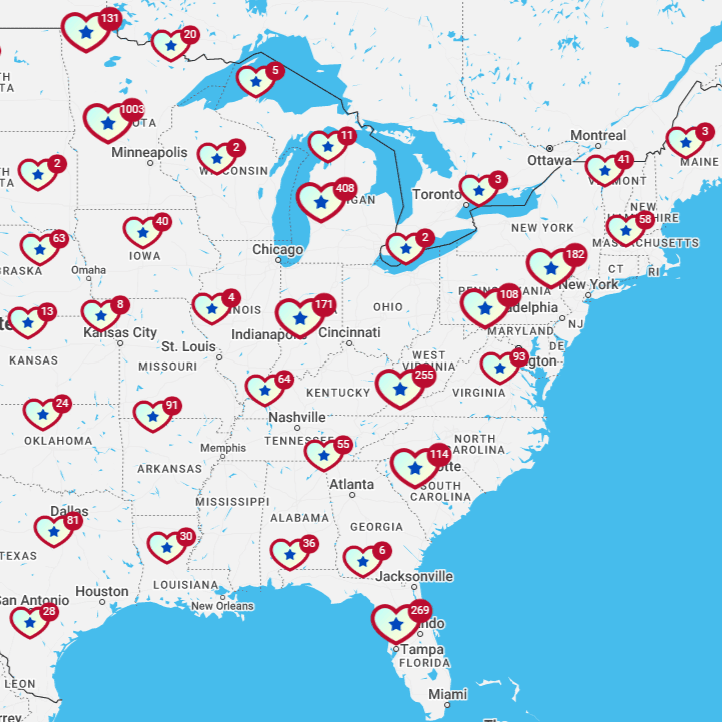
Libertarian vs Liberal: Differences in Political Ideologies
Libertarianism and liberalism are influential political ideologies with distinct historical contexts and evolutions. Both ideologies have significantly impacted contemporary politics and continue to shape policy debates worldwide.
The Origins of Libertarianism and Liberalism
Libertarianism
Libertarianism traces its roots to the idea of classical liberty, which emerged during the Enlightenment era in the 17th and 18th centuries. Influenced by thinkers like John Locke and Adam Smith, classical liberals championed individual rights, government involvement, and economic freedom.
In the 20th century, Libertarianism evolved into a separate ideology, placing an even stronger emphasis on individual liberty and advocating for the depreciation of intervention in both economic and social spheres. Libertarian principles gained traction through the works of influential figures such as Friedrich Hayek and Milton Friedman. In the United States today, Libertarianism is most often associated with the Libertarian Party, which is the largest third party in the country.
Liberalism
Liberalism rose as a response to the social and economic challenges brought on by the Industrial Revolution. Emerging in the 19th century, liberals sought to address inequality and promote social justice. Philosophers like John Stuart Mill and Thomas Paine played critical roles in shaping liberal thought.
Throughout history, liberalism has undergone various shifts and adaptations, incorporated progressive values, and advocated for governmental action to address societal issues. In the United States today, liberalism is often associated with the Democratic Party, as well as with various minor parties such as the Green Party and the Peace and Freedom Party.
Both ideologies have evolved and continue influencing political discourse, offering distinct perspectives on individual freedom, the government's role, and societal progress. Understanding these core differences is essential for engaging in informed discussions about the complexities of political philosophy.
Libertarianism vs. Liberalism: Ideological Differences
There are important differences in the political ideologies and policy priorities of Libertarians and liberals. The following list covers the most prominent differences.
It is important to note, however, that not all Libertarians or liberals hold exactly the same political beliefs. Additionally, this guide focuses on Libertarianism and liberalism as political ideologies, not as political parties. To explore a comparison of political parties, check out these related guides:
Explore the differences between the Libertarian and Democratic parties here.
Explore the differences between the Libertarian and Green parties here.
#1: Core Principles and Beliefs
Libertarianism
Individual Liberty: Places paramount importance on individual freedoms and personal autonomy. Individuals have the right to make choices without undue government interference.
Role of Government: Advocates for a minimalistic role of government, with limited powers and interventions in citizens' lives and the economy.
Economic Freedom: Believe in free-market capitalism, emphasizing the role of voluntary exchanges and private property rights in fostering economic prosperity.
Liberalism
Individual Liberty: Values personal freedoms, but they recognize the need for government regulation to protect those freedoms and ensure fairness.
Government: Sees a more active role for the government in addressing social and economic issues, using policies and programs to promote equality and protect vulnerable populations.
Social Justice: Social justice is a core tenet of isolationism, advocating for policies addressing inequalities and creating a more just and equitable society.
On social issues, Libertarians emphasize personal autonomy and minimal government interference, whereas liberals seek to address societal inequalities and protect civil liberties through government action.
#2: Economic Policies
Libertarianism
Free Market Capitalism: Advocates for a laissez-faire economic system where markets operate with minimal government intervention.
Government Regulation: Supports reduced government oversight to encourage market efficiency and individual autonomy.
Low Taxation: Argues for lower taxes, believing that individuals should keep a more significant portion of their earnings.
Minimal Social Welfare: Opposes extensive social welfare programs, preferring voluntary and private charity solutions.
Liberalism
Mixed Economy: Advocates for free markets and government intervention to address economic disparities.
Government Regulation: Supports government oversight to prevent market abuses and protect consumers and workers.
Progressive Taxation: Promotes higher taxes on the wealthy to fund social programs and reduce income inequality.
Social Welfare Programs: Advocates for robust social safety nets to support vulnerable populations and meet basic needs.
#3: Social Policies
Libertarianism
Personal Autonomy: Emphasizes individual freedom and self-determination in personal choices and lifestyle.
Minimal Government Interference: Advocates for limited government involvement in social issues, allowing individuals to make their own decisions.
Civil Liberties: Strongly supports the protection of liberties, such as freedom of speech and privacy rights.
Liberalism
Personal Autonomy: Values individual freedom but recognizes the need for certain regulations to protect society.
Government Intervention: Supports government actions to address social inequalities and ensure equal opportunities for all.
Civil Liberties: Prioritizes liberties, emphasizing the importance of equal rights and protections for all citizens.
Understanding the differences in social policies is essential in comprehending how these ideologies approach individual freedoms and societal issues. The contrast in their perspectives on government involvement in personal choices and civil liberties highlights the ideological divide and its implications for social and individual rights.
#4: Healthcare
Libertarianism
Market-Driven Approach: Believes that healthcare should be primarily driven by the free market, with minimal government inconvenience.
Individual Responsibility: Emphasizes personal responsibility for healthcare choices and costs, advocating for reduced reliance on government-funded programs.
Private Sector Solutions: Argues that competition and innovation in the private sector will lead to better and more efficient healthcare services.
Liberalism
Universal Access: Views healthcare as a fundamental right and advocate for a system that ensures universal access to healthcare services.
Government Role: Supports a more significant government role in healthcare, with either government-run or heavily regulated systems.
Social Safety Net: Believes that the government should provide a safety net to ensure healthcare access for all citizens.
#5: Education
Libertarianism
Government Involvement: Supports reduced government involvement in education and advocates for more parental choice and school competition.
Free Market Education: Believes education should be driven by market forces, with private schools and homeschooling providing viable alternatives.
Liberalism
Equal Access and Quality: Considers education a public good and advocate for government investment and regulation to ensure equal access and quality education.
Public Education Support: Supports robust public education systems and increased government funding for education.
#6: Environment and Climate Change
Libertarianism
Government Involvement: Believes that environmental protection is best achieved through free-market solutions without heavy government regulations.
Private Property Rights: Advocates for protecting private property rights, arguing that individuals will be incentivized to protect their property and the environment.
Voluntary Solutions: Prefers voluntary initiatives and private conservation efforts over mandatory government programs.
Liberalism
Government Action: Views environmental protection as a crucial role for the government, advocating for strong regulations to combat climate change and protect natural resources.
Collective Responsibility: Believes that society as a whole must take action to address environmental issues and protect the planet for future generations.
Investment in Clean Energy: Supports government investment in renewable energy and green technologies to transition towards a more sustainable future.
Overall, Libertarians favor minimal government intervention, relying on voluntary and market-based solutions for environmental protection. Liberals emphasize government action and regulation to combat climate change and protect the environment.
Impact on Contemporary Politics
Libertarianism and liberalism have both made important contributions to modern American politics. Here are the ideas from each ideology that have struck the strongest chord:
Libertarian Ideas
Size of Government: Libertarian ideas have influenced debates about the size and scope of government, advocating for smaller government and reduced government Involvement.
Economic Policies: Libertarian economic principles like free-market capitalism and fiscal conservatism have influenced discussions on taxation, regulation, and economic growth.
Civil Liberties: Libertarian emphasis on civil rights has shaped debates on privacy rights, freedom of speech, and individual autonomy.
Foreign Policy: Libertarian non-interventionist views have influenced discussions on military engagements and overseas involvement.
Liberal Ideas
Social Welfare: Liberal ideas have driven debates on social welfare policies, universal healthcare, and poverty alleviation programs.
Government Regulation: Liberal principles have influenced discussions on government intervention to address societal inequalities and protect consumers and workers.
Social Justice: Liberal ideas on social justice have impacted discussions on civil rights, racial equality, and LGBTQ+ rights.
Environmental Protection: Liberal emphasis on environmental protection has influenced climate change policies and sustainability debates.
The impact of Libertarian and liberal ideas on contemporary politics can be seen in policy debates, party platforms, and policy-making decisions. These ideologies have shaped the political discourse, driving discussions on the role of government, economic policies, social and environmental protection. Understanding their influence is crucial in comprehending the ideological underpinnings of political debates and the formation of public policies in today's political landscape.
Critiques and Challenges
Both Libertarianism and liberalism have faced various critiques and challenges over the years. Here are some of the most common:
Critiques of Libertarianism
Limited Government: Critics argue that a minimal government may lead to inadequate social safety nets and leave vulnerable populations without support.
Market-Based Solutions: Challenges arise in applying market-based solutions to complex issues like healthcare and environmental protection, which may not adequately address societal needs.
Income Inequality: Critics claim that unregulated markets could exacerbate income inequality and concentrate wealth in the hands of a few.
Foreign Policy Concerns: Critics question whether a non-interventionist foreign policy can effectively address global challenges and protect national interests.
Critiques of Liberalism
Government Overreach: Critics argue that an overly active government could lead to excessive regulations and hinder economic growth and individual freedom.
High Taxes and Spending: Challenges arise in funding extensive social welfare programs, as critics raise concerns about the burden of high taxes on the economy.
Economic Efficiency: Critics question whether government interventions in the economy might stifle innovation and hinder market efficiency.
Social Conservatism: Some critics view liberal social policies as undermining traditional values and moral frameworks.
Addressing common criticisms and challenges is essential in understanding the limitations and complexities of applying Libertarian and liberal ideologies to real-world situations. Acknowledging these critiques fosters balanced discussions and informed decision-making in shaping policies and governance that best serve society's needs.
Potential for Collaboration
The following areas provide the potential for collaboration between those who adhere to the ideologies of Libertarianism and liberalism:
Civil Liberties and Personal Freedom: Both libertarians and liberals prioritize civil liberties and personal freedom, creating opportunities for collaboration in protecting individual rights and privacy.
Criminal Justice Reform: Libertarians and liberals share concerns about criminal justice issues, leading to potential collaborations in advocating for fair and equitable reforms.
Drug Policy: Both ideologies may find common ground in supporting drug policy reforms, such as decriminalization or legalization, focusing on individual freedom and public health.
Anti-Corporatism: Libertarians and liberals may collaborate in addressing concerns about corporate influence on politics and seeking campaign finance reform.
Environmental Protection: While approaches differ, both ideologies care about environmental sustainability, fostering opportunities for collaboration in conservation efforts.
Privacy and Surveillance: Libertarians and liberals may unite in advocating for stricter measures to protect citizens' privacy in the digital age.
Non-Interventionist Foreign Policy: Both ideologies may find common ground in promoting diplomacy and reducing military involvement overseas.
Despite differing approaches, Libertarians and liberals can work together in areas where shared values align. Collaboration could advance policy advancements in civil rights, criminal justice, and corporate influence.
Conclusion
Both political ideologies are likely to continue shaping policy debates and influencing modern governance as they respond to emerging issues and adapt their platforms to meet the needs of changing times. As the political landscape evolves, the significance of these ideologies in shaping future policies and governance remains an essential aspect of contemporary political analysis.
Want to dive deeper into political analysis? Explore more resources related to political ideologies and parties here.
Photo by Pixabay
Learn how GoodParty.org is empowering Independent and third-party candidates across the political spectrum to run for office, win, and serve their communities.
